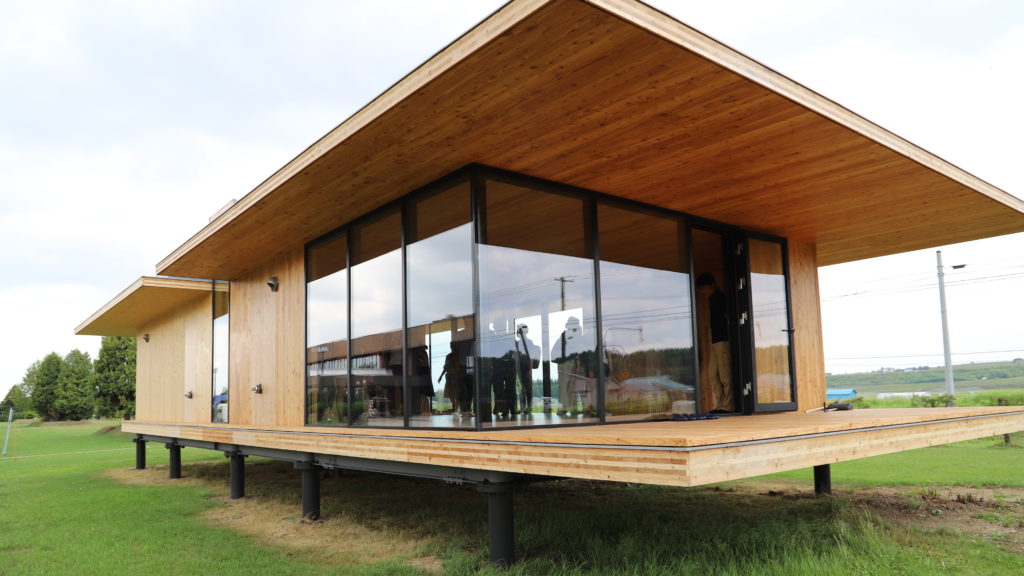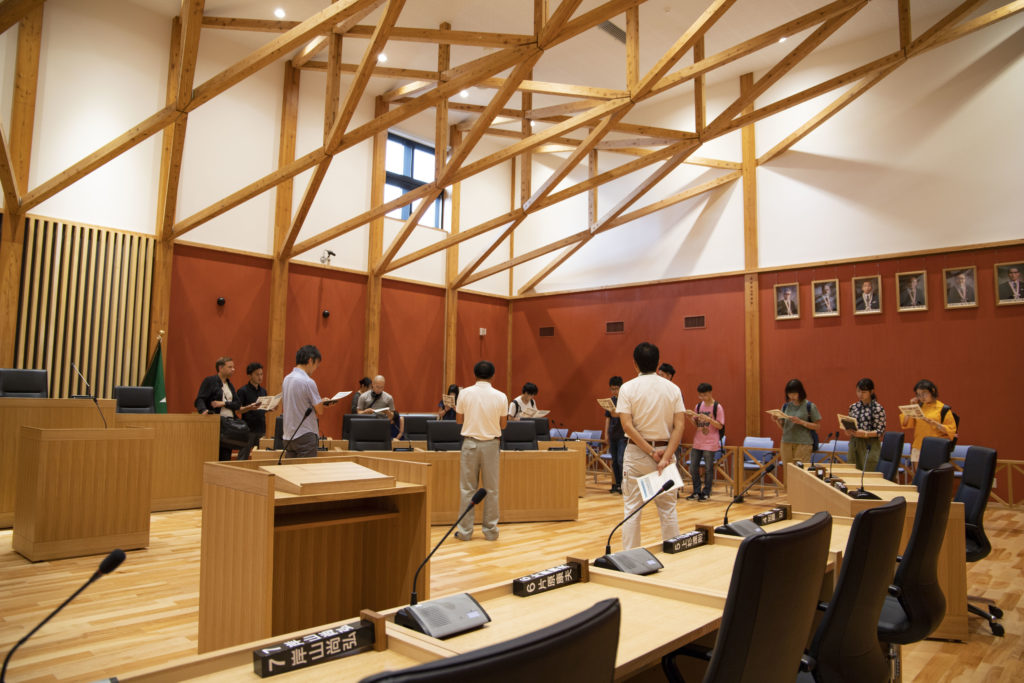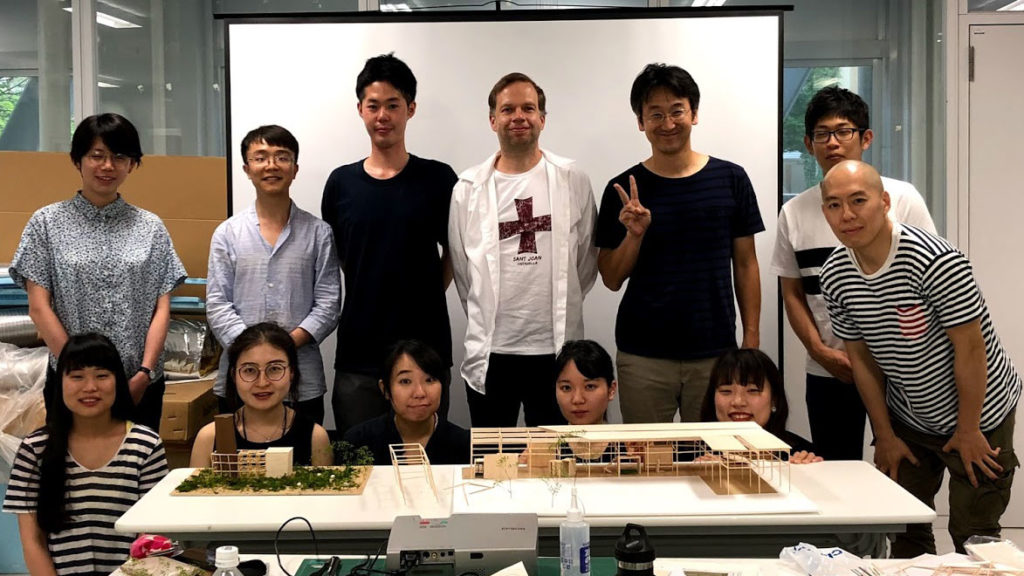HSI Report: Wood construction in Hokkaido and Arctic regions
University News | August 08, 2019
Some of the main attractions to constructing buildings out of wood, versus concrete, is that it is more environmentally friendly and has the potential to mitigate climate change via decreasing the amount of carbon dioxide in the atmosphere.
In the 2019 Hokkaido Summer Institute course “Wood construction in arctic region,” which ran from July 29th to August 1st, students were able to study wooden structures and visit sites in Hokkaido utilizing this type of architecture.
Master’s student Yusuke Iwama, a member of the Laboratory of Building Environment with the Graduate School of Engineering, expressed his enthusiasm. “I’m extremely interested in wood as a resource. I took this course because timber structures are environmentally friendly, and I wanted to learn more about them.”
The first half of the course was composed of lectures so the students could get a solid understanding of the topic before the site visits and workshops. In his lecture on wood construction in Finland, Professor Janne Pihlajaniemi of the University of Oulu explained different types of wooden architectural styles and showed unique examples of how each can be utilized to achieve a variety of purposes. In addition to these technical points, he also wanted to showcase the attraction that wooden architecture offers from an artistic standpoint. “Wooden structures offer the same spatial quality of forests—that feeling of being inside and outside at the same time.”
The students then went on a day trip to Northern Hokkaido and were able to see how wooden structures are studied, tested, and constructed at the Forest Products Research Institute, Hokkaido Research Organization, in Asahikawa. Afterwards, they visited and learned about large wooden structures in the area, including Toma Town Hall and Takasu District Community Center “Furatto.”
Professor Atsushi Takano of Kagoshima University, another one of the course conveners, explained that, despite the attractions of wooden architecture, it is very important for students to understand they need to think about utilizing them on a case by case basis. “We need to think about these structures from both an architectural side and forestry side so we can protect our forests while also reducing our carbon footprint.”
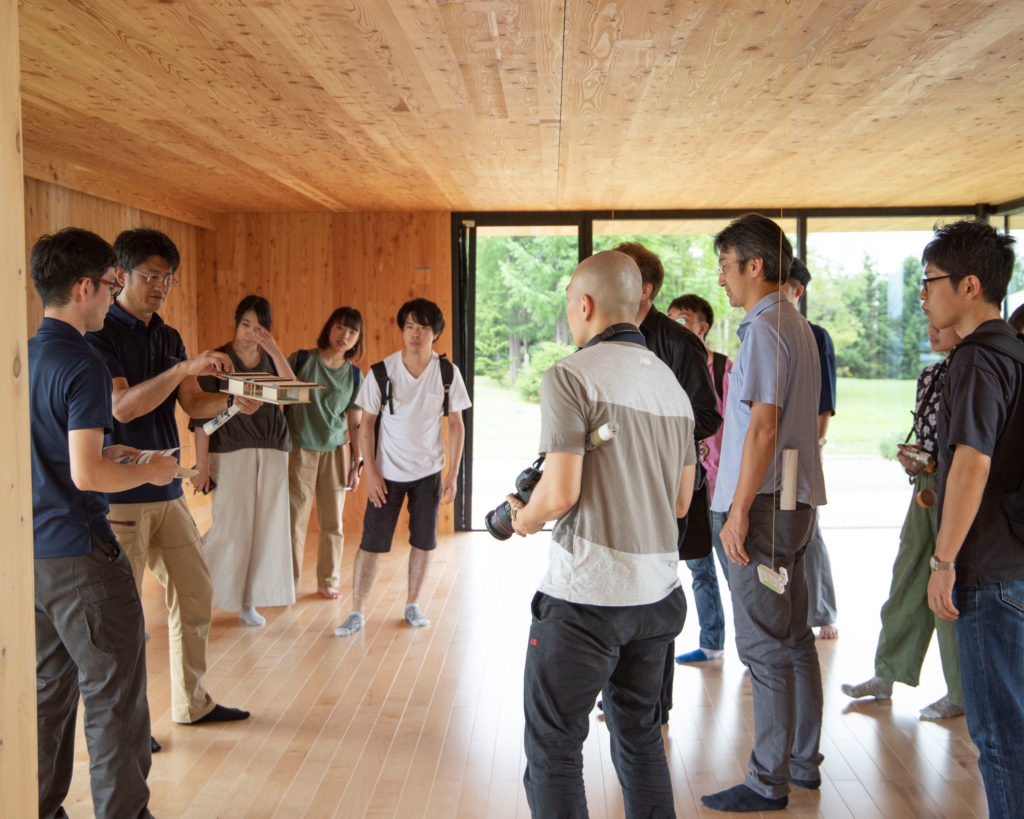
Wooden architecture requires a lot of know-how, with each building type requiring different construction techniques.
For the workshops towards the end of the course, the students were then able to develop their ideas on how wooden architecture can be used to commemorate the 100 year anniversary of the School of Engineering in 2021.
“Hokkaido has so many different types of wood, and we should be developing this more. I hope that through this course the students learned more about what is possible for wooden structures and will be a part of projects to develop wooden architecture in the future,” commented the head course convener, Associate Professor Taro Mori.
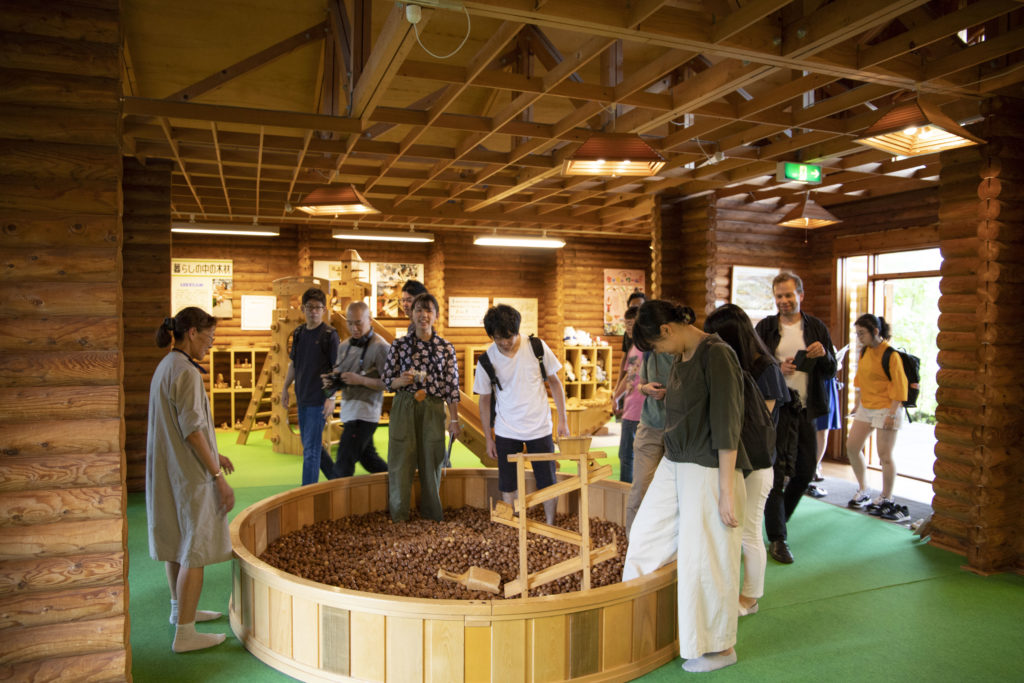
The course participants exploring a nursery primarily made of wood at the Forest Products Research Institute, Asahikawa
Written by Katrina-Kay Alaimo, Ph.D.

